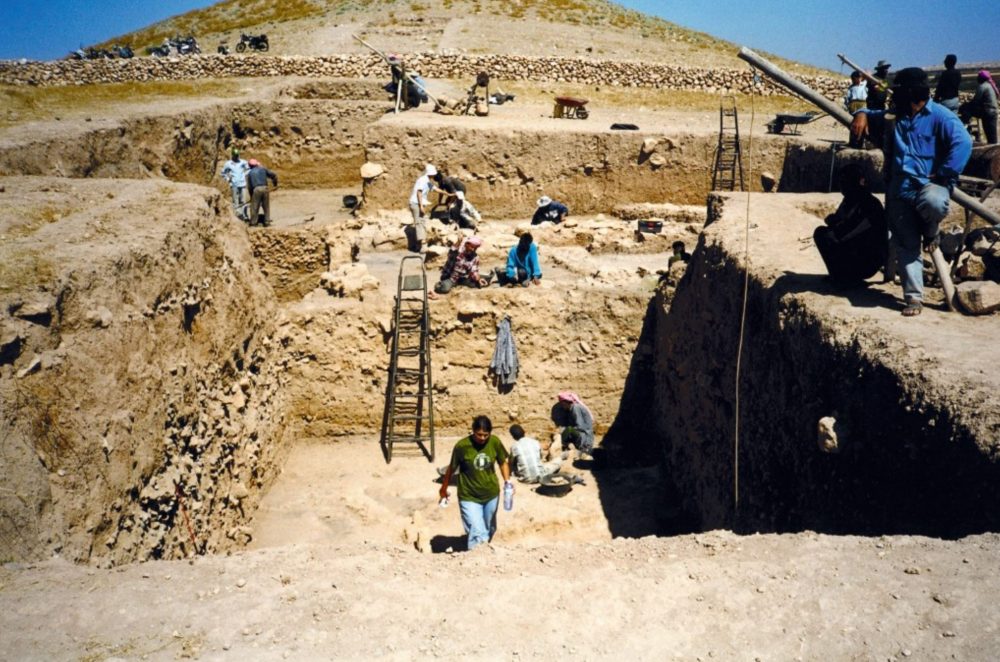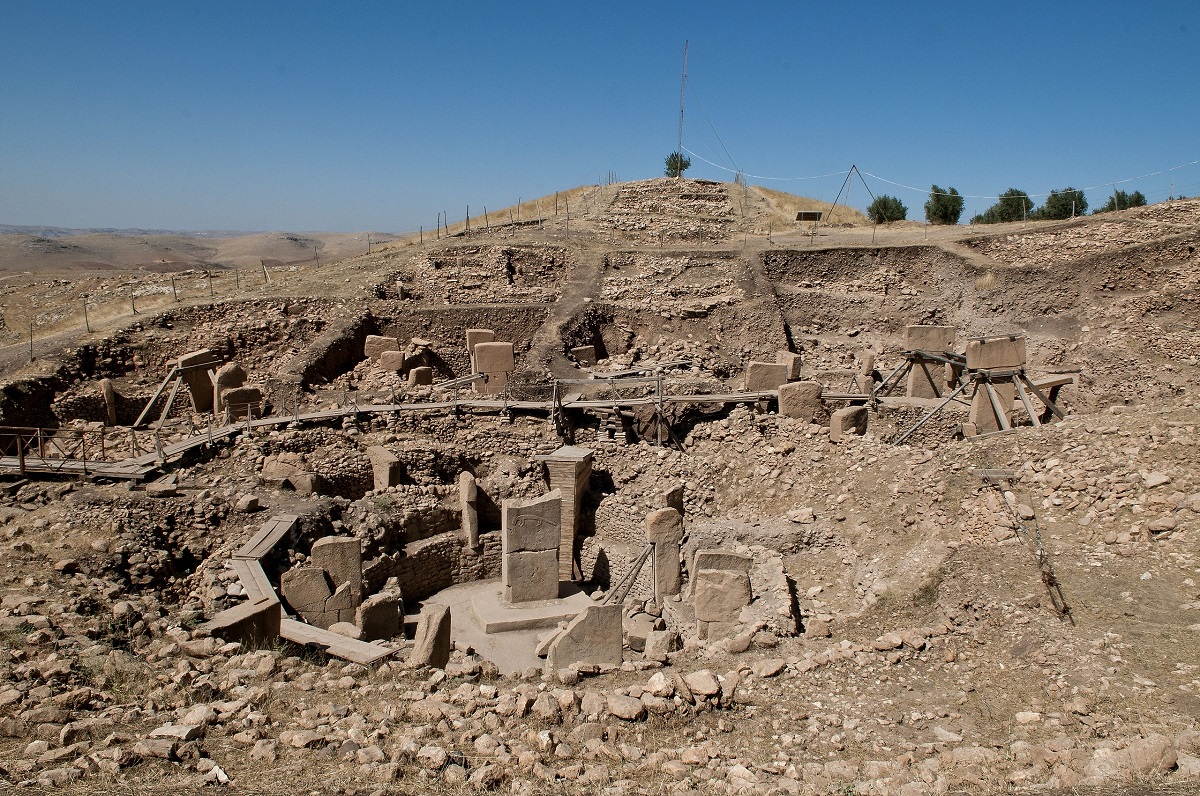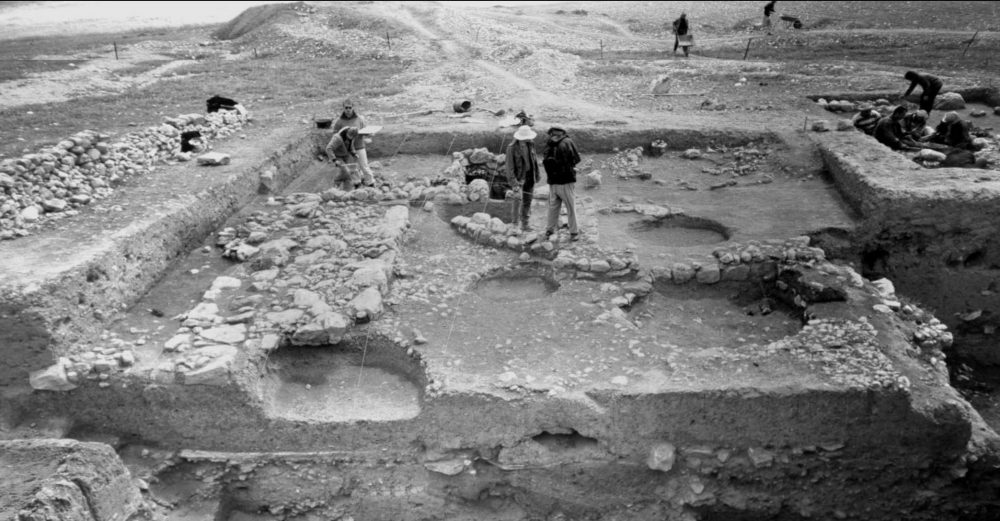Around 8,000 years before the first pyramid in Egypt was built, people in the wider area surrounding the ancient city of Aleppo built the oldest tower on Earth and the oldest megalithic temple on the surface of the planet.
An ancient site located in northern Syria is one of the rare sites which dates to the Younger Dryas period. Located not far from the oldest temple on the planet’s surface, Göbekli Tepe, the site, dubbed Tell Qaramel, is also home to what experts have described as the most ancient megalithic round towers ever discovered on Earth.
In present-day Syria, we find some of the oldest, most fascinating ancient sites on the surface of the planet. The Aleppo Governorate, in particular, is a treasure trove of ancient history. As one of the fourteen provinces of Syria, Aleppo is the most popular in Syria, home to nearly five million people, representing around 23% of the country’s total population.
The area, located not far from the border with Turkey, is of great archaeological importance.
It is there where the remains of one of the oldest cities on the planet’s surface are found; the ancient city of Aleppo is considered one of the oldest continuously inhabited cities on the surface of the planet.
Not far from the ancient city are the remnants of an archeological site called Tell Qaramel. Adjacent to the Quweiq river that flows to Aleppo, Tell Qaramel is located in a fertile valley and an important trade route.
Archaeological excavations have discovered traces of an ancient settlement that existed on the site from around 12,000 years ago, surviving all the way to the Hellenistic period; a period in history between the death of Alexander the Great in 323 BC and the emergence of the Roman Empire as signified by the Battle of Actium in 31 BC.
Around 12,000 years ago, probably when Göbekli Tepe was being built, the site at Tell Qaramel was already part of a larger complex with an approximated total area of around 3.5 hectares spreading to the south and south-west of the tell and covered by up to 2.5 m of later deposits throughout the Bronze Age and Iron Age, as revealed by a paper published in 2009.
Researchers have argued that the settlement at Qaramel developed during an early stage in forming new cultural and economic models of civilization.
The oldest megalithic stone tower
Tell Qaramel is home to 5 of the most ancient rounded towers on the surface of the planet. Its inhabitants also constructed two striking shrines (one of which is thought to have also been used as a common house for meetings and gatherings.
3 of the oldest towers at Tell Qaramel date back from around 10,890–9670 BC and probably served as a cult and assembly place (shrine/common house).

Archeologists have discovered traces of more than 60 circular and oval houses and accompanying utility structures divided into 14 occupational levels.
In addition to the houses, researchers discovered traces of hearths, storage and waste pits, and hiding places in the courtyards.
The inhabitants of Tell Qaramel built their houses by partially digging their foundations into the ground.
On some occasions, houses were built directly on the surface using walls made from irregular blocks or mud mixed with fine stone pebbles, bones, and a mixture of materials that the inhabitants gathered from surrounding areas.
Dating results have determined the occupation and evolution of the settlement dating from the early stages of the Pre-Pottery Neolithic period, which covers about 10,900–8800 BC.
However, dating the site and understanding its importance has been difficult for experts. Scientists have even rejected some archaeological samples because the radiocarbon dates were inconsistent with the stratigraphy. Besides, the very early dates at Tell Qaramel seem too old as opposed to dating of similar cultural phases at other archaeological sites.

A massive site
Despite the importance of the site, experts say that researchers have surveyed no more than 1.5% of the entire archaeological site. In addition, archeological excavations were halted in 2007 due to the civil war in Syria.
However, in addition to the settlement’s age, striking is the remnants of five massive round stone structures that experts believe to be the oldest on the planet’s surface.
The oldest megalithic tower at Tell Qaramel has a diameter of six meters and seems to have had various functions; communal as well as a lookout. It was built with an elevated center that featured two benches on it.
The fourth phase was the most massive, with towers stretching more than 7.5 meters in diameters, with a stone wall approximately 2.30 meters in thickness, but without any internal structures.
This was damaged by fires but shows traces of having been rebuilt. It may have served as a defensive structure.
The earliest phase has been carbon-dated by scientists between the eleventh millennium and 9670 BC. If proven accurate, it would make the structure at Tell Qaramel approximately two millennia older than the stone tower located at Jericho, which was earlier considered the oldest known tower construction on the planet’s surface.
This is huge. Not only because of the age of Tell Qaramel but because of the structures that were built at the site.
Furthermore, we cannot ignore the fact that Tell Qaramel is no more than 30 kilometers away from Aleppo’s ancient city, which is a few hundred kilometers away from Göbekli Tepe.

This suggests that the wider region around Tell Qaramel and Aleppo was inhabited by a complex group of able people between 13,000 and 11,000 years ago to construct megalithic structures without problems. One cannot forget that Göbekli Tepe is considered the oldest temple on Earth. It features massive blocks of stone, some of which weigh more than a ton each.
According to experts, Tell Qaramel is one of the most significant archaeological sites for understanding the origin of plant and animal domestication and the origins of architecture in the Northern Levant and neighboring
regions of the Near East.
Experts revealed excellent environmental conditions at Tell Qaramel allowed its inhabitants to develop a highly advanced “PPNA culture,” which was probably based on the model of economy typical for very specialized hunter-gatherers who did not see the necessity for domesticating plants and animals.
More importantly, this is evidence that at Qaramel, we have the same situation at Göbekli Tepe in the Taurus region.
The significance of sites such as Tell Qaramel and Göbekli Tepe is even greater when knowing that the very first Egyptian pyramid–the Step Pyramid of Djoser–is thought to have been completed at Saqqara, in Egypt around 2.680 BC, around 4,700 years ago.
The oldest megalithic towers at Tell Qaramel date to around 10,890 BC. This means that nearly 9,000 years ago, people in the wider area around ancient Aleppo could create complex structures made of stone.
As evidence stand the structures at Tell Qaramel and the oldest temple on the surface of th planet, Gobekli Tepe, and its more than 200 intricately carved stone pillars, some of which weigh more than a ton.
Join the discussion and participate in awesome giveaways in our mobile Telegram group. Join Curiosmos on Telegram Today. t.me/Curiosmos





